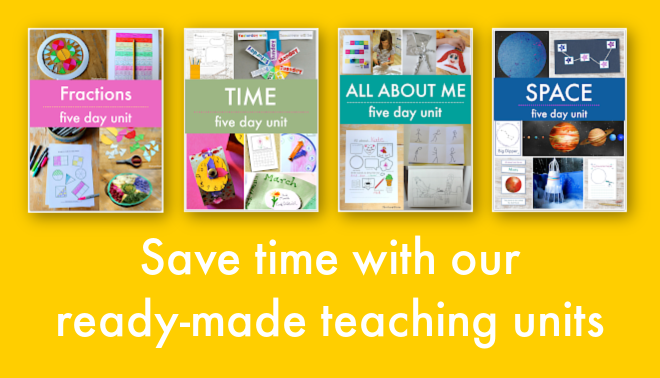Let’s explore a growing gummy bear for science experiment and learn how osmosis works.
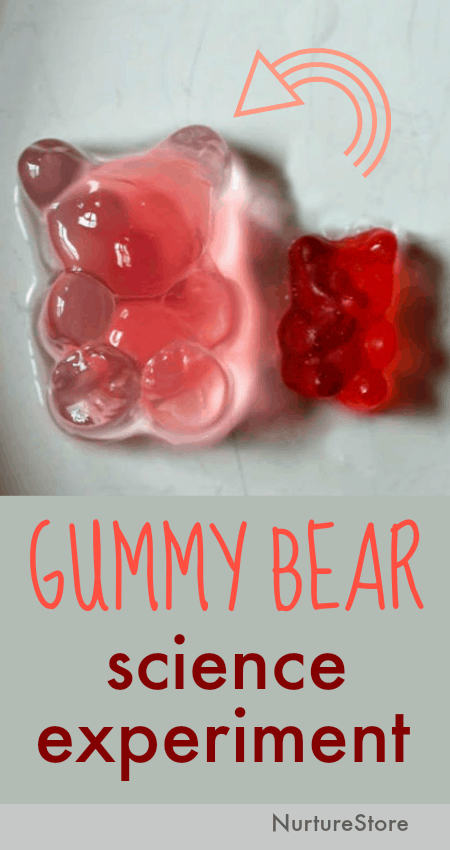

Save time with our ready-made Science teaching units
For the best science lesson ideas, save time and get all our ready-made Science teaching units from our Play Academy. In our Candy Science unit you’ll get:
- a ready-made Candy Science thematic unit
- bonus printables to make your teaching even easier
- a lesson plan to learn about about diffusion using Skittles colours
- a lesson plan to learn about acids and bases making gummy worms dance
- a lesson plan to learn about osmosis by growing gummy bears
- a lesson plan to learn about dissolving and states of matter with two candy cane experiments
- a lesson plan to learn about engineering and a gumdrop construction challenge
- bonus printables including candy cane experiment record sheets and a set of Construction Challenge cards
- plus over 300 more individual lesson plans in 50 ready-made teaching units so you can easily teach an engaging and successful program that includes math, literacy, science, art, and more, all year round, year after year. Everything is planned for you and easy to find, saving you so much time.
Download your Candy Science Unit here
Come and join our popular Play Academy community and never have to lesson plan again! Join here and download your first ready-made unit today.
Growing gummy bear science experiment to show osmosis
Let’s try out one of of science lesson plans. In this simple science experiment using candy, we’re using gummy bears to show osmosis.
This gummy bear science lesson:
:: introduces children to the scientific method
:: invites them to make predictions
:: asks them to observe and record results
:: invites them to generate a hypothesis
:: encourages them to ask questions and develop their experiment
:: demonstrates the process of osmosis
You might like to eat a gummy bear or two before you start your experiment, but don’t eat any of the ones you experiment with because, in addition to collecting water, they might also collect bacteria. Ew!
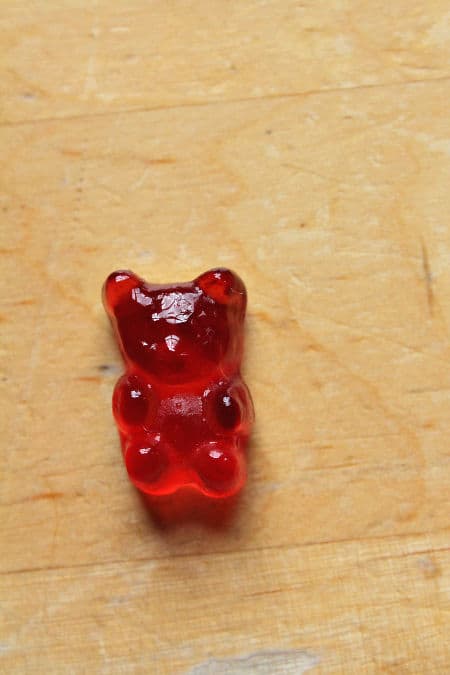
Materials needed
:: gummy bears
:: glass or clear plastic jar
:: water
:: stopwatch
:: paper and pencil
:: ruler
:: spoon
Select one or two gummy bears to act a your control. Measure them with a ruler and record how big they are. Then sit them on a plate and don’t do anything else to them.
The control in a science experiment is very useful. It’s a sample of the materials you are using that you don’t experiment on. You don’t add anything extra to them or try to change them in any way.
You can compare the results of your experiment with your control set. This lets you see how the materials you have experimented with have changed, compared to what the control set is like. It can help you understand the results of your experiment.
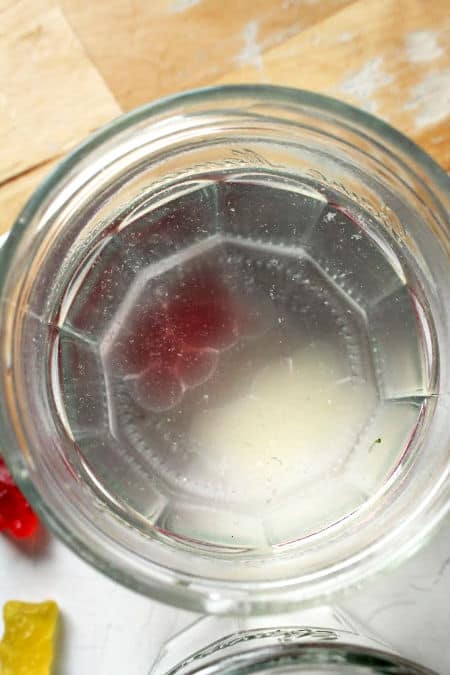
Place one or two other gummy bears in a glass of water.
Observe the gummy bears over time and note down on your paper what happens to them.
You might like to set a stopwatch to intervals of time and note down the appearance of the gummy bears after 1, 5, ten, twenty, forty and sixty minutes. Then after two and four hours.
You can carefully, using a spoon, take the gummy bears out of the water at each time interval. Measure them with a ruler and record their size on your paper, and then carefully place them back in the water.
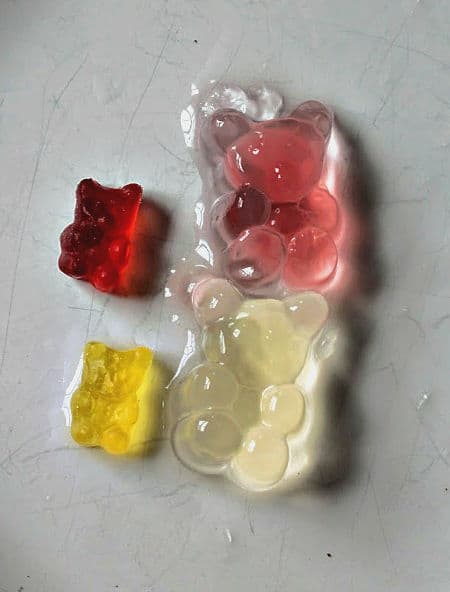
After you have left your gummy bears in the water for the time you have decided on, carefully take them out of the water using a spoon and set them beside the gummy bears you have used as your control (the ones that weren’t placed in water).
What do you notice about their appearance? How have the gummy bears that were in the water changed? Have the control gummy bears changed?
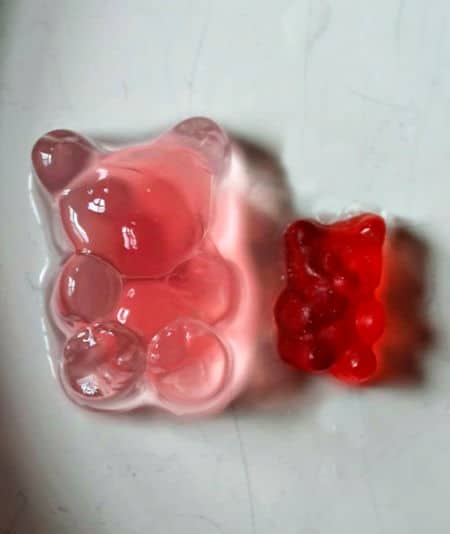
Variations and extensions
To develop your gummy bears experiment you might change an aspect of your experiment to see what effect if has on your gummy bears. You might:
:: change the length of time they are in the water
:: change the temperature of the water
:: try a liquid other than water, such as salt-water, sugar-water, vinegar, milk or oil
:: try a different kind of candy
:: weigh the gummy bears as well as measuring their length
:: experiment to see if the gummy bears shrink in size after they have been taken out of the water
How does the growing gummy bear science experiment work?
Why do the gummy bears grow in size? What’s the science behind it?
It’s because of osmosis.
Osmosis is the process by which water moves across a semi-permeable membrane, from an area where there’s a high concentration of water molecules to an area where there’s a low concentration of water molecules.
There are more water molecules in the water in the jar than there are in the gummy bear.
Osmosis causes some of the water molecules to move from the water in the jar into the gummy bear. As the gummy bear fills with water, it gets bigger.
The gummy bear is made of gelatin, which acts like a sponge, so rather than dissolving in the water, the gummy bear grows in size.
How to grow sunflowers with children
Let’s fill our garden with beauty and our children with wonder by growing sunflowers! Here’s a guide on how to get started growing sunflowers with children, plus extra resources for sunflower lesson plans and learning guides.

Save time and get your ready-made science units!
Yes, you can do all the planning yourself if you want to, or you can head straight to our Play Academy and download our ready-made science units. That sounds like a better idea!
With our ready-made science units you can teach your children about topics including daffodils, dinosaurs, candy science experiments and space. Each unit is ad-free, clearly laid out and very easy to teach. Plus you’ll get fun printables to make your teaching even more engaging.
Come and join the Play Academy and never have to lesson plan again!


